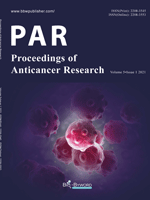Abstract
In recent years, with the change of rhythm and eating habits of the public, the number of patients with anorectal diseases has gradually increased, and postoperative urinary retention has also become more common. Urinary retention refers to the symptoms of anorectal diseases and is caused by improper urination and incompletion of urination due to surgical and pain causes that result in bladder and urine filling and are accompanied by lower abdominal distention and pain. In traditional Chinese medicine, acupuncture is simple and effective as a treatment. In this article, we focus on five meridians that pass through the lower abdomen Ren meridian, kidney meridian, spleen meridian, stomach meridian, and liver meridian, namely the “five meridians,” and study the mechanism of action so as to provide new therapeutic ideas for clinical acupuncture treatment of postoperative urinary retention of anorectal diseases.
References
Zhang Q, 2008, Abdominal Acupuncture Therapy for Urinary Retention after Hemorrhoid Surgery. Guangzhou University of Chinese Medicine.
Xi Z, 2003, Acupuncture Treatment of 120 Cases of Postoperative Urinary Retention after Anorectal Surgery. Shaanxi Chinese Medicine, 2003(7): 646-647.
Kwaan MR, Lee JT, Rothenberger DA, et al., 2015, Early Removal of Urinary Catheters after Rectal Surgery is Associated with Increased Urinary Retention. Diseases of the Colon & Rectum, 58(4): 401-405.
Wang C, Xu Y, Yan J, 2020, Clinical Observation on Urinary Retention after Hemorrhoids Treated by Massage along the Kidney Meridian. Asia Pacific Traditional Medicine, 16(1): 134-135.
Lee M, Longenecker R, Lo S, et al., 2019, Distinct Neuroanatomical Structures of Acupoints Kidney 1 to Kidney 8: A Cadaveric Study. Med Acupunct, 31(1): 19-28.
Sun W, Li M, Lin T, et al., 2018, Effectiveness of Acupuncture for Recovery of Flatulence after Cesarean Section: A Case Report. Medicine (Baltimore), 97(50): e13352.
Saultz JW, Toffler WL, Shackles JY, 1991, Postpartum Urinary Retention. J Am Board Fam Pract, 4(5): 341-344.
Zhang J, Wang Y, Guo Y, et al., 2018, Effect of Electro-Acupuncture at Zusanli Acupoint on Postoperative T Cell Immune Function in Rats. Nan Fang Yi Ke Da Xue Xue Bao, 38(11): 1384-1388.
Monchanok C, Lu KW, Yang J, et al., 2015, Targeting TRPV1 for Body Weight Control Using TRPV1?/? Mice and Electroacupuncture. Sci Rep, 17366(5): 1-9.
Wang L, Yang M, 2016, Clinical Observation on 90 Cases of Dysuria after Stroke Treated Mainly by “Zhongji Santou” Acupuncture. Heilongjiang Traditional Chinese Medicine, 45(1): 55-56.
